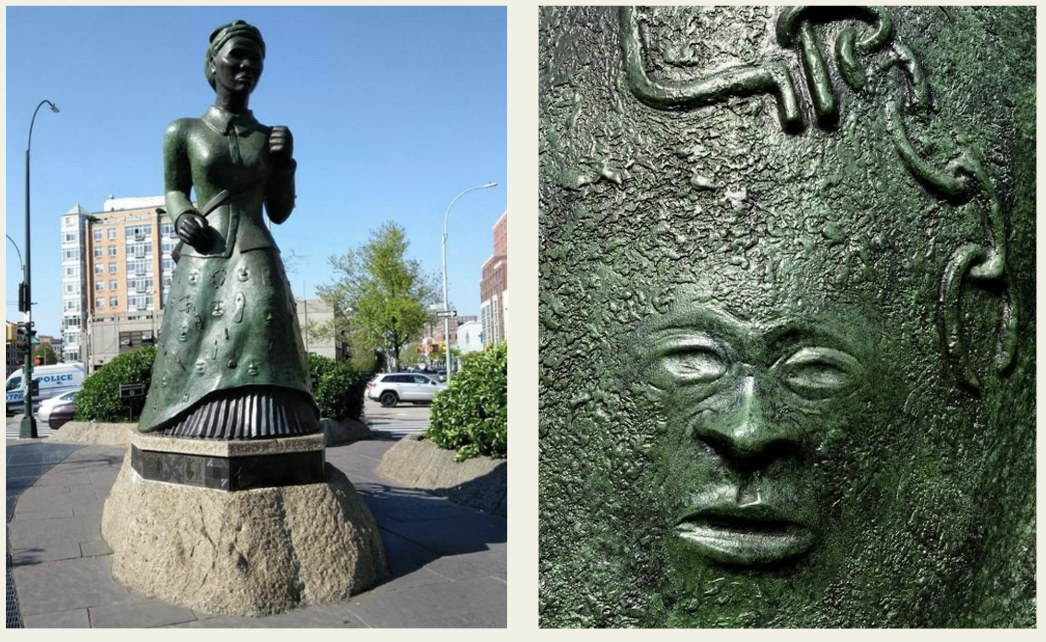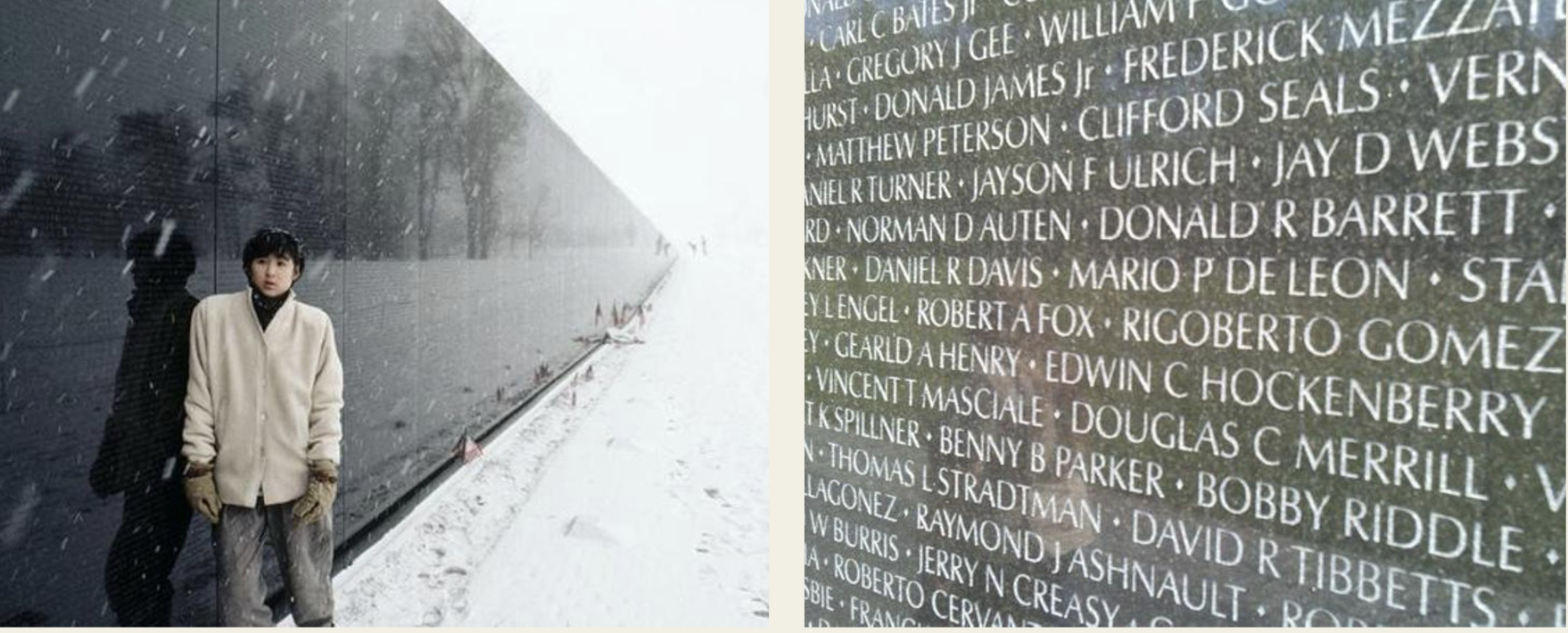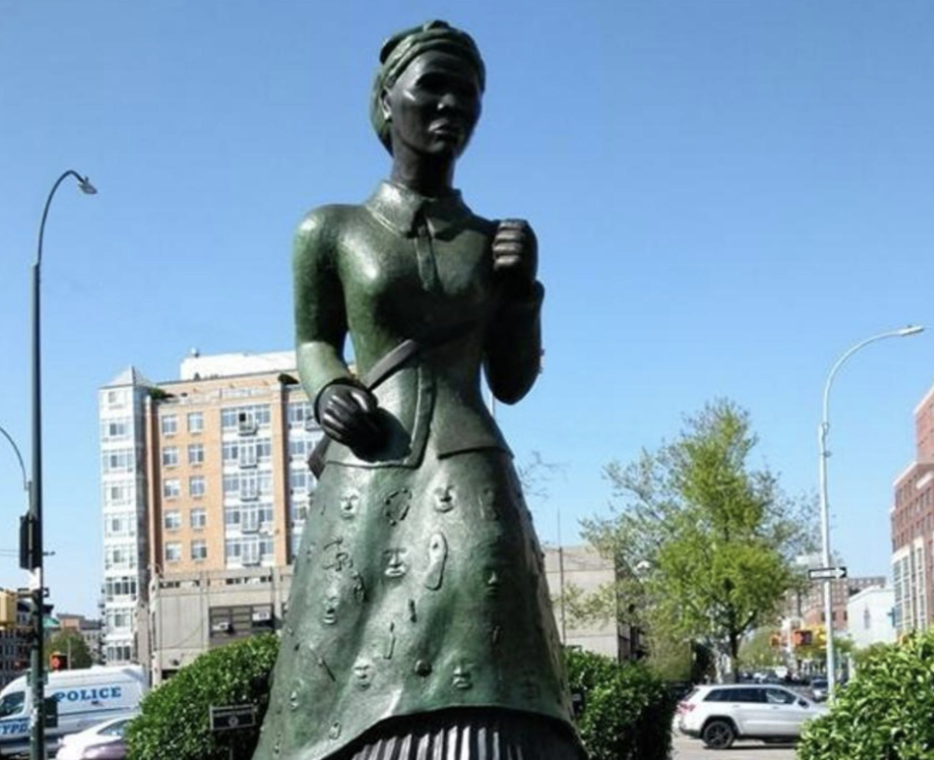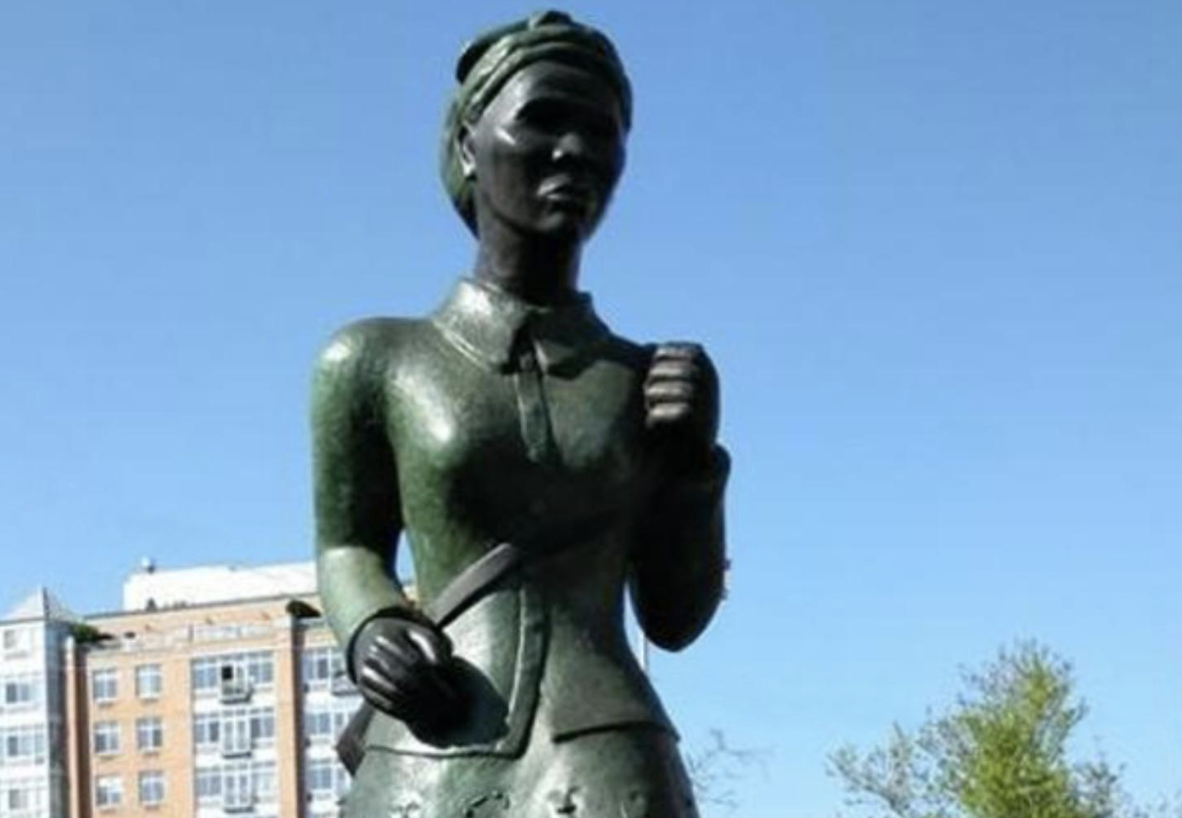Overview
Students will prepare for upcoming art-making lessons using close-looking, speaking, writing, and/or sketchbook prompts.
Materials and Tools
- Pencil
- Sketchbook or one to two pieces of paper
Activities
Note: The following activities are written with sample language you may use with your students. Following the art-making lesson, you may choose as many reflection activities as desired for students to work on in class or independently.
Step 1: Introduction and Close Looking: Alison Saar and Maya Lin (20 minutes)
As we finish our monuments, we can consider whether to add texture, text, or images as details. Detail can add to a monument, but monuments can also be powerful because of their simplicity.
Note to Teachers: Before teaching with a work of art, spend some time looking closely at it on your own. Familiarizing yourself with the artwork will prepare you to guide the close looking activity.
If your students are new to looking at art together, you can introduce the activity to students in the following way:
Today we are going to spend some time looking at and discussing a work of art together. When we look at art, there are no right or wrong answers. I’m going to ask you to look closely, share your ideas about what you see, and listen respectfully to each other’s ideas. Everyone’s ideas are important. We all see things differently, and when we look at art, we can learn to see through each other’s eyes.

Look closely at these images of Swing Low: Harriet Tubman Memorial by Alison Saar. This monument is in the Harlem neighborhood of New York City.
Alison Saar covered her sculpture of Harriet Tubman with symbolic imagery that helps to tell the story of the Underground Railroad.
Look closely at this artwork.
- What stands out to you?
- How did the artist use detail to tell a story?

The artist Maya Lin took a very different approach when she designed the Vietnam Veterans Memorial. Maya Lin’s memorial is famous for its simplicity. It is made up of two sloping granite walls covered with the names of those lost in the war.
- How is this different from other monuments you’ve seen?
- Why do you think the artist chose to commemorate Vietnam Veterans in this way?
Step 2: Writing (10 minutes)
- What do these monuments by Alison Saar and Maya Lin have in common? How are they different?
Both artists began with large forms and added details.
- What did each artist choose to add to their larger forms?
- How do these details add meaning to their monuments?
Step 3: Sketchbook (20-30 minutes)
Look at the image of an artist’s sketchbook on Slide #7. In this sketch, the artist explored different ways of adding text and color to simple forms.
Think about adding detail to your monument.
- Is there something you would like to draw or write that would add to your sculpture?
- Do you want to add an image, word, or quote?
Now look at the sketchbook page on Slide #8. This artist has researched symbols and collected images that relate to their monument. Take some time to research and draw symbols, words, or colors you might want to add to your monument.
After giving students time to sketch, invite them to share.
- Will you add details to enhance the idea of your monument? What will you add and why?
Resources

Alison Saar on Swing Low: Harriet Tubman Memorial
More about Alison Saar’s Swing Low: Harriet Tubman Memorial
Maya Lin’s design for the Vietnam Memorial

